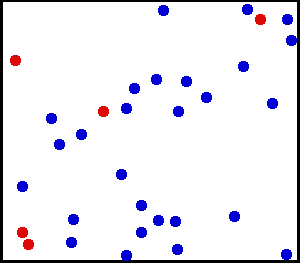Elastic Collision
In elastic collision the total kinetic energy of all the bodies under consideration remains
constant. The coefficient of restitution for this kind of collision is always 1. The energy
is not converted to heat , noise or potential energy but converted to kinetic energy itself.
In the example below the kinetic energy is converted to kinetic energy itself. If you check the
rotation checkbox the translational kinetic energy will be also converted to rotational kinetic
energy.



